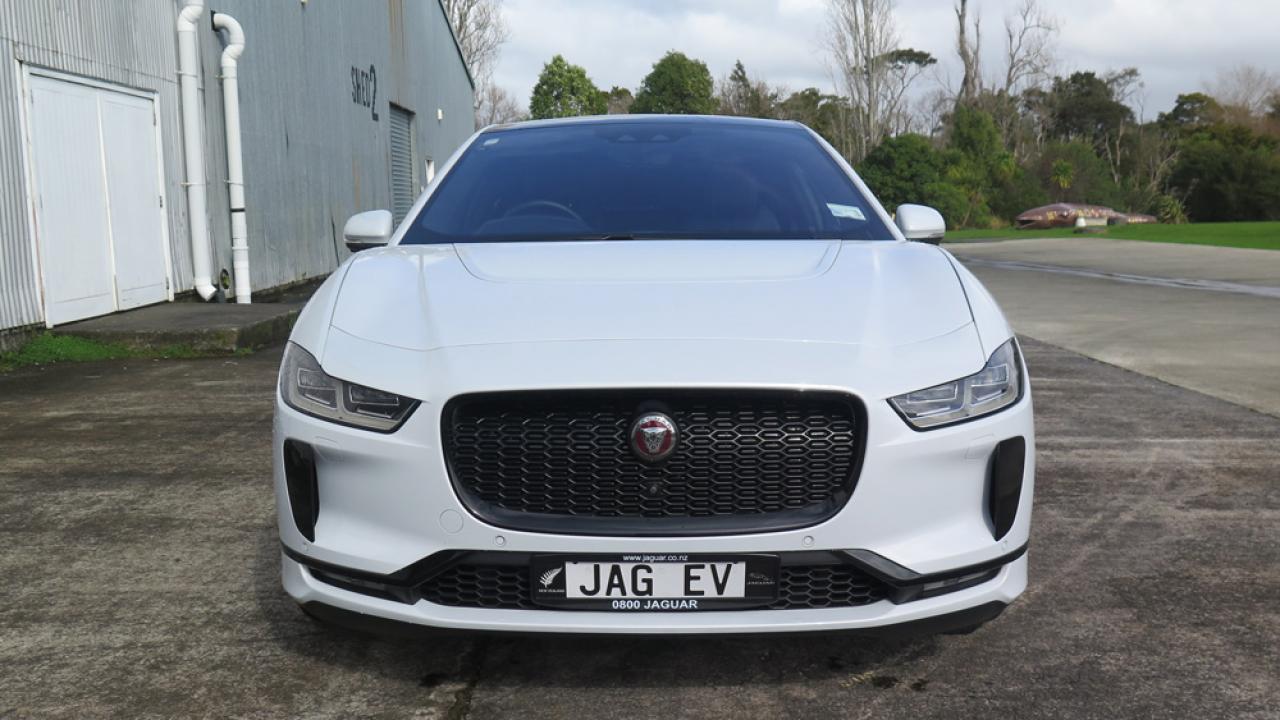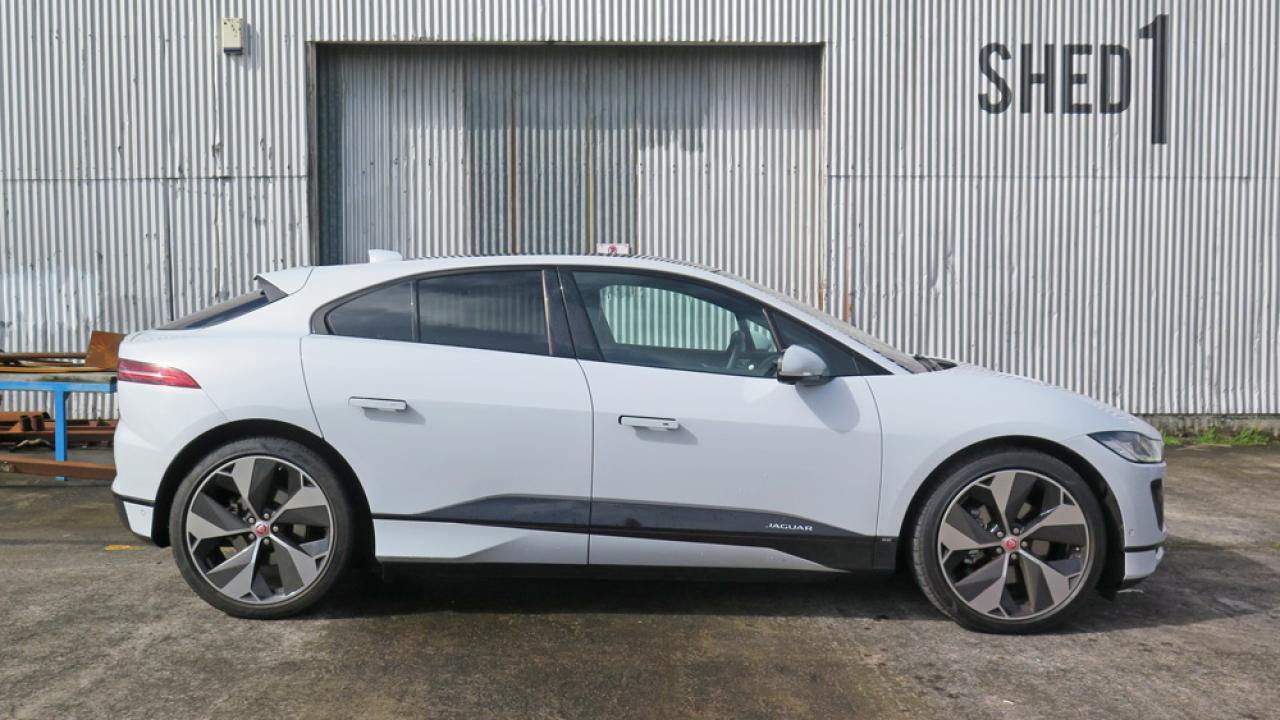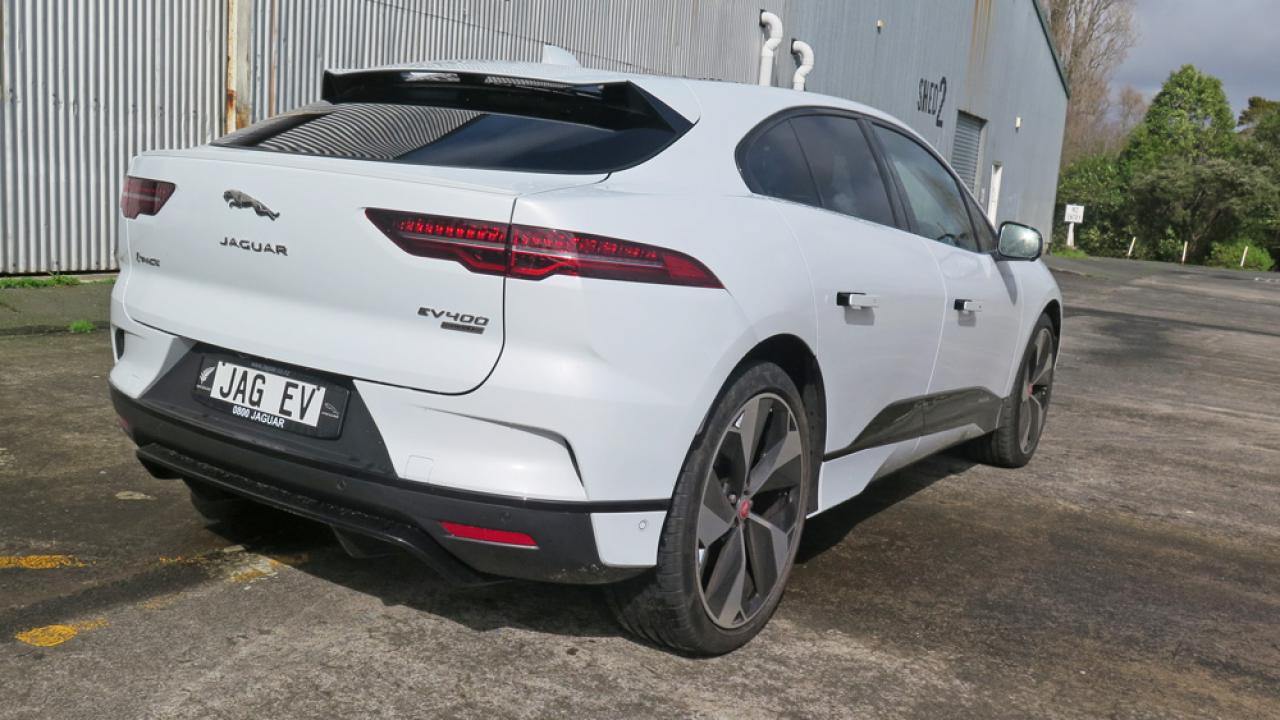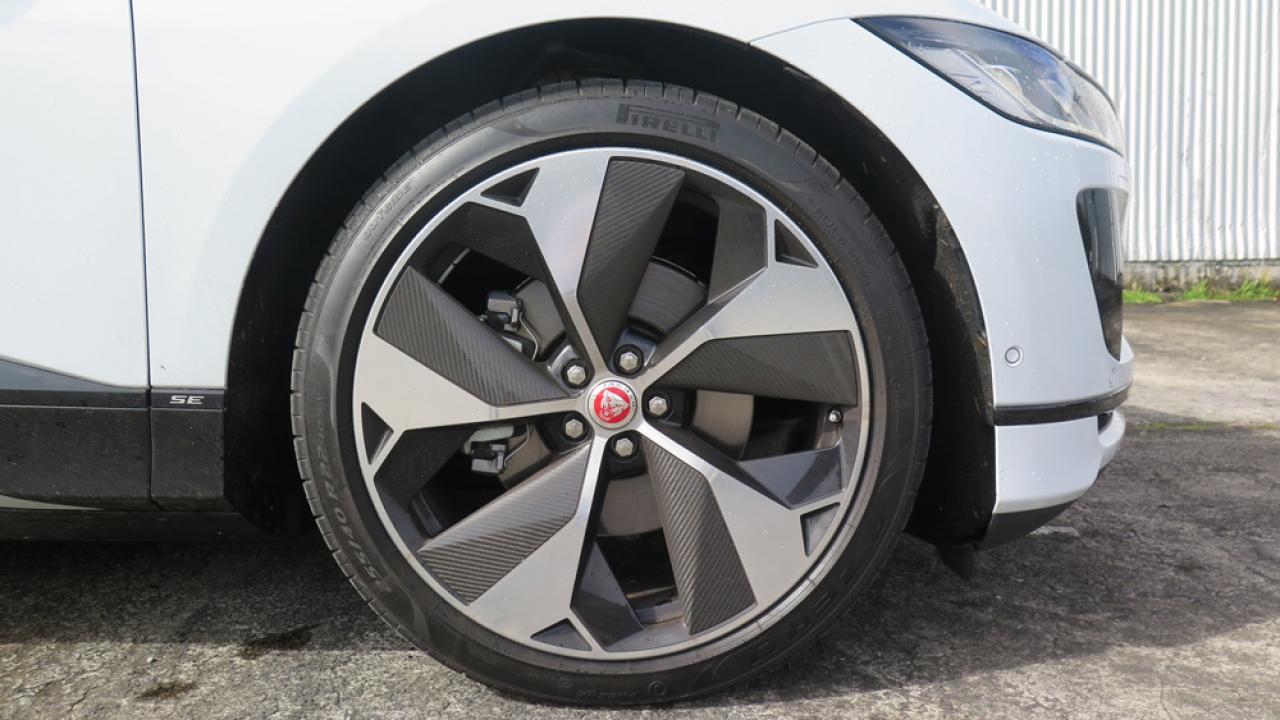Teslas are self-consciously futuristic – recall the Model 3’s dash, blank bar a huge screen – while others closer to mainstream prices carry a price premium over equivalent versions fuelled all or in part by petrol or diesel.
But the I-Pace sets itself apart by being a luxury car, a vehicle you anyway expect to pay more for. The choice of power is simply a feature, it’s not the most obvious attribute of this car, an effortlessly opulent GT with the sporty cues and cossetting fitments one expects from a Jaguar.
It certainly looks like one, albeit crossed with a soft-roading SUV, though the extra height is somewhat offset by the optical illusion imparted by those huge, 22-inch wheels, an option fitted to the car we tested.
Tesla has done a fantastic job of promoting itself. Many folk seem to think it’s the only electric car in town. The Tesla we’ve driven had a longer range, and more high-tech features than the I-Pace, and accelerated at a more eye-watering rate. However our short drive time suggested it’s not a car for keen drivers – it doesn’t relish being thrown through any swervery.
But the Jaguar does. The brand is no longer expected to produce a hard-core, no-compromises sports car, but a Jag is expected to handle well, and this I-Pace lives up to the bill. It also gives you a two-in-one experience, as you can adjust the amount of regenerative braking.
Set it to high, and it feels just like a luxurious EV. Set it low, turn ‘creep’ on, and it feels a lot like a car with a conventional engine – it handles rather well, and even the steering heft is set to deliver that feeling there’s a connection between your hands and the four wheels.
Of course the low centre of gravity which seems to come with EV tech, and the grunty torque figure from low revs – also an EV strength – help, and even the weight is well controlled. Ride is excellent, compliant and beautifully controlled, yet it feels sharp enough to chuck through corners with vigour.
Those swoopy lines suggest a compromise in cabin space, but in fact it’s more than spacious enough for four or five adults to feel well catered to, with plenty of luggage room – the only downside of the sleek design being a somewhat limited rear view from the driver seat.
As for tech features, there are plenty, though anyone who’s also tested a Range Rover might feel a bit miffed that the two seem to share a few, and some prefer a wider array of driver assist goodies. We also understand that tech geeks kinda expect wireless phone charging and an even faster infotainment system, though none of the predominantly nerdy AA team found cause for complaint, or felt more driver assist tech would make this a better car.
After all, the I-Pace is already not a cheap car. As standard it sells from $159,900, but our test example came out at $173,800 including cost options, which threw in the privacy glass ($750), fixed panoramic roof ($2350), configurable mood lighting ($400), heads up display ($1550), tailgate gesture opening ($250), front fog lamps ($300), garage door opener homelink ($400), Veh Acc Leisure Activity Key ($650), cabin air quality ionization ($200), Matrix LED ($1450), black exterior pack ($600), ebony morzine headlining ($500), driver assist pack ($1300), electronic air suspension ($2550) and 22-inch alloy wheels ($5650). Kerching!
And immediately you’ll spot two things. Some of these features are the same as options fitted to the Land Rover Evoque – yes, they’re built by the same company, as India’s Tata Motors owns both brands. And some, like the tailgate which opens as you swing a foot beneath it, or fog lights, and even blind spot monitoring are fitted as standard to much cheaper cars.
The I-Pace doesn’t seem to have a direct competitor yet, other than Tesla, partly a result of its relatively short, four-year development. So Jaguar NZ has had the luxury of pitching a price in a new segment, in one of the first markets to sell this vehicle that doesn’t already benefit from a pro-EV subsidy. It also has the advantage of publicity following this car’s win of the World and European Car of the Year awards, the World Car Design of the Year and the World Green Car awards.
Given it adjusted pricing down a tad earlier this year, it seems Jaguar NZ wants to make the most of hitting the luxury EV market ahead of all its rivals, and with global accolades still ringing in its ears.
|
At a glance |
|
|
Models |
Jaguar I-Pace |
|
Engine |
Two electric motors, 90kWh battery pack |
|
Price |
$159,900 ($173,800 as tested) |
|
ANCAP safety rating |
5 |
|
Power and Torque |
294kW, 696Nm |
|
Transmission |
Auto |
|
Fuel economy |
470km range, 21.2kWh/100km |
|
Towing capacity |
750kg braked |
|
2WD/4WD/AWD |
AWD |
|
Seating capacity |
5 |
|
Luggage capacity/payload |
638-656 litres, 1435-1453 litres with row two folded |
Safety systems
- Emergency brake assist
- Blind Spot Assist
- Adaptive cruise with stop and go
- High-speed emergency braking
- Lane Keep Assist
- 360-degree parking aid, rear camera, rear traffic monitor and park assist
- Rain-sensing wipers
- Auto headlights and headlight levelling






